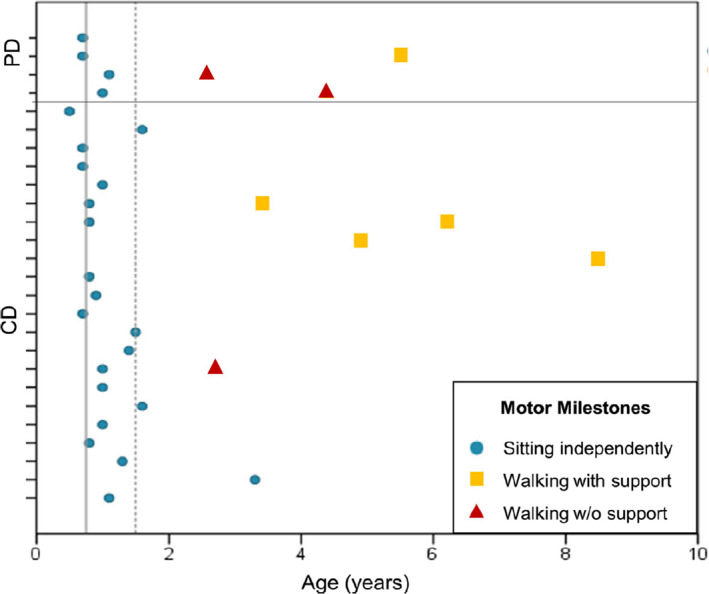In the article by Zambon et al., 1 the original version of Figure 1 showed the age at attaining developmental milestones in 24 patients with LAMA2‐RD. Tick marks on vertical axis indicated single patients. Patients with more severe phenotype/complete merosin deficiency (CD) were included in the bottom section; patients with milder phenotype/partial deficiency (PD) were in the top section. Dots indicated age at independent sitting, squares age at walking with support, and triangles age at independent walking. For two patients with PD, it squares were wrongly assigned instead of triangles. In the main text, it is correctly indicated that both these patients achieved independent ambulation (red triangles). The corrected figure follows.
FIGURE 1.

Age at attaining sitting without support and walking with or without support in 24 patients with LAMA2‐RD. Tick marks on vertical axis indicate single patients. Patients with more severe phenotype/complete merosin deficiency (CD) are included in bottom section; patients with milder phenotype/partial deficiency (PD) are in the top section. Dots: age at independent sitting. Squares: age at walking with support. Triangle: age at independent walking. The continuous vertical line at 9 months and dashed line at 18 months indicates WHO thresholds for attaining independent sitting and walking alone in 99% of children, respectively (reference: WHO Multicentre Growth Reference Study Group. WHO Motor Development Study: Windows of achievement for six gross motor development milestones. Acta Paediatrica Supplement 2006;450:86–95). Observational information on sitting and walking are not included in this figure. We apologize for this error.
Reference
- 1. Zambon AA, Ridout D, Main M, et al. LAMA2‐related muscular dystrophy: natural history of a large pediatric cohort. Ann Clin Transl Neurol 2020;7:1870–1882. 10.1002/acn3.51172 [DOI] [PMC free article] [PubMed] [Google Scholar]


